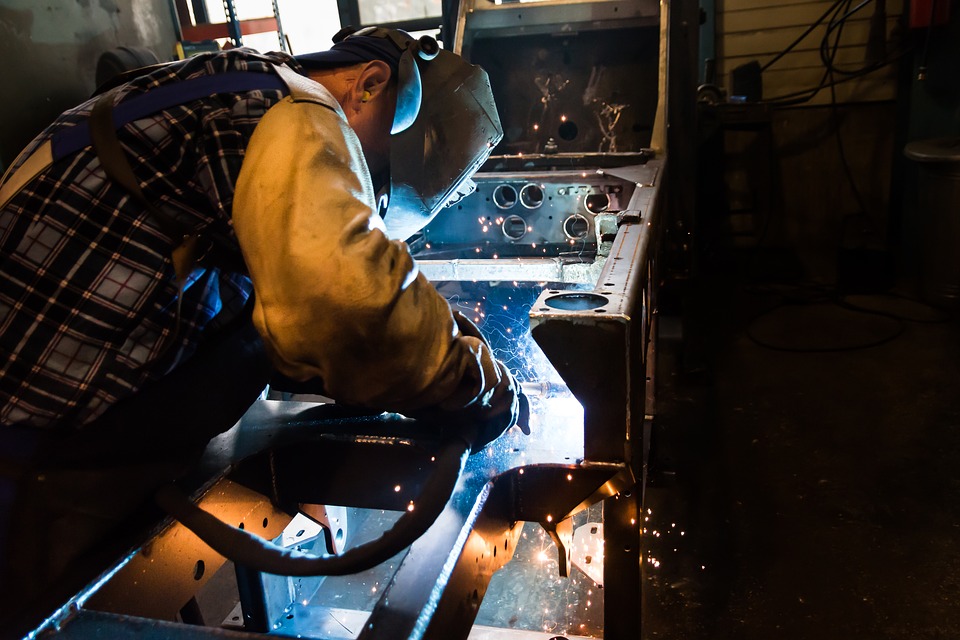Hardenability is a complex property that varies depending on an alloy’s microstructural arrangement and chemical content. The attribute varies so significantly that it cannot be considered characteristic of any specific family of alloys whatsoever. Consider stainless steels, which are loosely subcategorised into five distinct subfamilies encompassing over 150 individual grades.
In this blog post, Masteel will briefly outline some of the challenges and solutions associated with hardening stainless steels.
Hardening Austenitic Stainless Steels
Austenitic stainless steels are known for their high corrosion resistivity, which arises due to elevated levels of nickel (Ni) and chromium (Cr) in the alloy. They cannot be hardened via heat treatment but may benefit from work-hardening due to plastic deformation in the metal’s crystal lattice. This phenomenon is also referred to as strain hardening and cold-working.
Annealing is typically employed to impart the optimal thermomechanical properties to austenitic stainless steel grades. This involves immersing the alloy in a solution at temperatures exceeding 1040°C (1904°F) to remove precipitates from its surface. Quench annealing may be used to overcome the issue of sensitization in the stainless steel, while post-annealing is often conducted after welding to correct mechanical variations inducted in the alloy by the heat of the welding torch.
If you are interested in austenitic grades, read our previous blog post: Outlining Austenitic Stainless Steel
Hardening Ferritic Stainless Steels
Ferritic stainless steels are like their martensitic counterparts in terms of corrosion-resistivity, albeit with significantly decreased nickel and elevated levels of chromium. This decreases the cost of the alloy alongside the material’s proclivity towards stress corrosion cracking. Yet it still cannot be hardened by conventional thermal processing.
Process annealing is used to impart maximum ductility and corrosion resistance at the expense of hardness. This follows a similar process to martensitic annealing albeit with shorter recrystallization periods at lower temperatures of approximately 760 – 955°C (1400 – 1751°F).
We covered the properties and applications of ferritic grades in a previous post: Outlining Ferritic Stainless Steel.
Hardening Martensitic Stainless Steels
Martensitic stainless steels could be described as the most conventional alloy in terms of its hardenability properties. They typically display a proportional hardenability to carbon (C) content and are subsequently suited to standard austenitizing, quenching, and tempering.
The alloy is heated to a point above its critical temperature long enough for recrystallization to occur. This causes a decrease in ductility in favour of hardness, up to a maximum point. It is then quenched and tempered to achieve the optimal intersection of workability, corrosion resistance, and hardness.
We explored martensitic steels in a previous post: What is Martensitic Stainless Steel?
Stainless Steels from Masteel
Masteel is one of the UK’s leading suppliers of stainless steels for various applications in engineering and construction. We supply grades in each of the five primary subfamilies of stainless steel, although we have not explored Duplex and Super Duplex stainless steels in this post. This is because they cannot be work hardened or austenitized and are typically only supplied in the annealed condition.
If you have any questions about hardening stainless steels, please feel free to contact us
Our Dedicated UK Stainless Division

Based in Wolverhampton (United Kingdom), D.S. Willetts is our dedicated stainless steel division in the UK. D.S. Willetts specialises in the supply of stainless steel plates and profiles. In-house services offered by D.S. Willetts include laser, waterjet, plasma, plate saw, band saw, and guillotine cutting.
Stocked Grades
- 304/304L/304H
- 316/316L/316H
- 310, 321, 347/347H
- Duplex 1.4462
- UNS S32750 & UNS S32760
For more information on the capabilities of D.S. Willetts, please visit the D.S. Willetts website – www.dswilletts.co.uk

